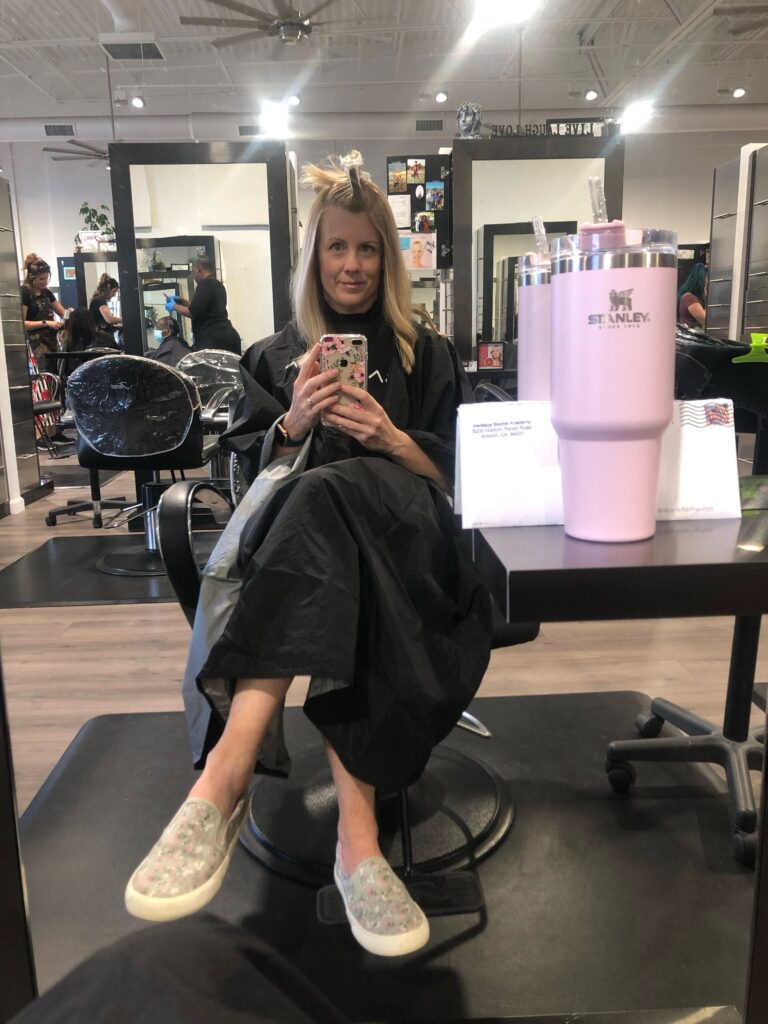 Healthy, radiant hair can work wonders for your physical appearance and boost your self-esteem. I just walked out of the salon today, ready to catfish some people. I got a fresh bob haircut.
Healthy, radiant hair can work wonders for your physical appearance and boost your self-esteem. I just walked out of the salon today, ready to catfish some people. I got a fresh bob haircut.
However, things don’t always go according to plan in the efforts to maintain your locks. According to research, women naturally lose 50 – 60 hair strands daily, and issues such as severe breakage, tangles, no growth, and scalp irritations could often arise. Usually, one common factor that is often associated with these issues is product buildup in the hair. Your styling products, shampoos, conditioners, and other haircare products can become too much and result in hair loss, making it essential to know how to manage this. Below are five common signs of product buildup in hair and how to restore your locks.
Dull and lackluster hair
Hair stylists say dull strands are the usual red flags of product buildup. If your hair is also appearing darker than usual, that could also be another tell-tale sign. The various styling products like shampoo, conditioners, treatment creams, and others can lead to this. Whether your hair is processed or natural, there are products made specifically for each type. After a while, however, these products gradually create a film on your hair strands, reducing their natural shine. This coating can cause a dull and cloudy appearance in your hair. When this happens, you may be tempted to increase your hair oil usage to reinstate that natural shine, but that usually doesn’t work. It’s better to use a high-quality clarifying shampoo to deep-cleanse your hair. These clarifying shampoos are specially formulated to strip accumulated residue from your strands. By deep cleansing your hair, the coating will finally be washed away to reveal the natural shine underneath. You can use clarifying shampoos once or twice a month for the best results.
Itchy scalp
As product buildup takes place, residue from styling products accumulates on the scalp, causing irritations that lead to persistent itching. The more the itch, the higher the chances of you scratching it so much that you sustain tiny cuts on your scalp. Persistent itching and scratching can also inflame your hair follicles. In such situations, it’s advisable to confirm whether you’re experiencing an allergic reaction. If not, you can solve this by firstly switching to gentler, sulfate-free hair products to see how your hair and scalp react to them. Your hair stylist may recommend periodic scalp exfoliation to eliminate dead skin cells to stop the persistent itch. In many cases, however, a clarifying shampoo can resolve the discomfort because of its ability to remove product residue.
Limp hair
If you’ve ever wondered why is my hair so flat, particularly when it doesn’t have its usual bounce, the answer could lie in your products. Many women who experience limp-looking hair often say product buildup is the last thing to come to mind, as they usually assume that the hair oils are too heavy for their strands. However, research reveals that oils from shea butter and coconut suffocate the scalp and hair. As a result, your strands may eventually appear flat and lifeless. Although these oils are usually beneficial, the tip is to know when and how to use them. Your hair type also determines whether these oils are good for you. However, do not worry much if your hair is flat due to product buildup. You can research more on ingredients that weigh down your locks and stop using them. You can also try lightweight hair products with volumizing abilities to revive your hair. Additionally, a weekly deep conditioning treatment will help nourish and strengthen your hair.
Difficulty styling your hair
Have you ever wondered why your curls won’t hold for long, even after using a curling iron? What about your hair gels and sprays that fail to keep your strands in place? If you’re having challenges with styling your hair, it may be due to product buildup. The solution is to reassess your current product choices and enlighten yourself on the ingredients. Alternatively, you can explore other options. For example, some women adopt a routine of using apple cider vinegar for periodic hair rinses. Wash your hair thoroughly after shampooing and conditioning. Then, make a mixture of diluted apple cider vinegar to massage into your scalp and hair. Experts say 2-3 tablespoons of apple cider vinegar in 8 ounces of water works excellently for all hair types. The last step is to rinse the mixture after 10 -15 minutes. This process acts as a healthy reset for your hair, allowing it to absorb nutrients better.
Severe hair breakage
Losing a little hair sometimes is a normal process, but there may be cause for concern if you often shed large quantities. Severe breakage starts from the mid-length of several hair strands and often looks dry, with a rough texture. Sometimes, a gentle pull on your hair leaves several more in your hands, making you wonder how they could have just broken off effortlessly. Another tell-tale sign could be when you also see a little bit of product in your hairbrush when some of your hair falls off. Although severe hair breakage may result from iron deficiency or product allergy, it helps to know whether there’s more to it. Product buildup will take a toll on your hair when you fail to adopt timely interventions. As mentioned in previous points, you can start by using clarifying shampoo to remove residue. Your hair stylist may also suggest a deep trim to get rid of damaged hair while what’s left is treated back to good health.

There are many other ways to determine if there is product buildup in your hair beyond those listed above. That includes your hair becoming more oily than usual, and your strands becoming suspiciously straight when you usually have curly hair, among others. Knowing all these signs will help you give your hair the needed attention to ensure you always get the best results. Remember to consult your hair stylist to enable you to always make informed decisions regarding your hair.



